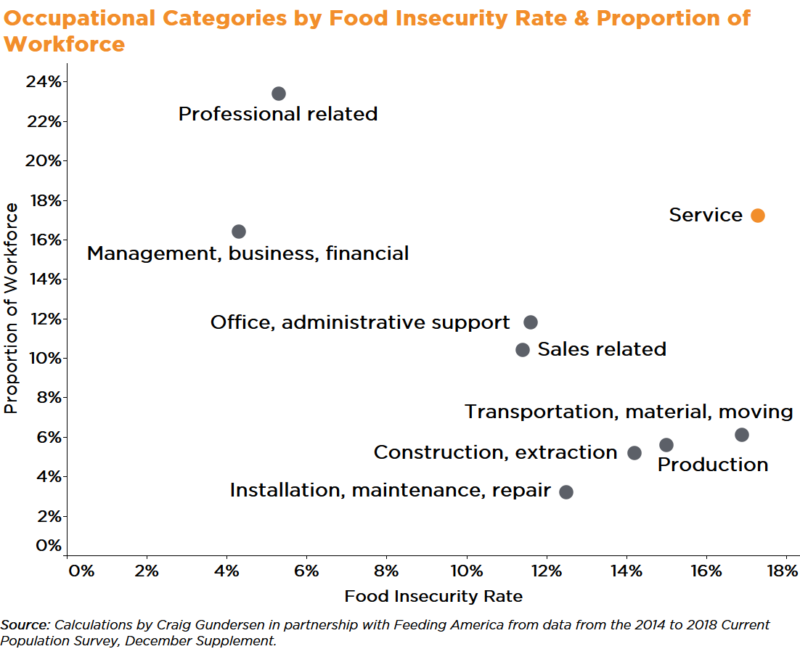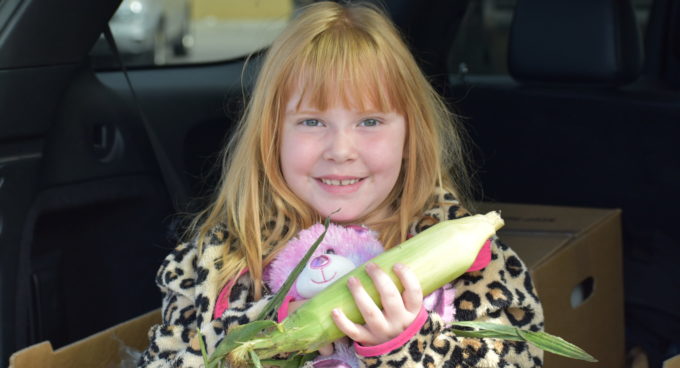As we enter a new month in the novel coronavirus (COVID-19) crisis, some states are beginning to ease restrictions, while in others residents face another month of shutdowns. These shifts and stays carry with them a mixture of hope (of jobs returning), anxiety (of the virus spreading), and uncertainty. Amidst soaring unemployment in recent weeks, millions of people are newly at risk of becoming food insecure, while millions more who experienced food insecurity before COVID-19 (37 million in 2018) are facing continued hardship.
Low-income workers struggled before, and many are struggling more now.
As time goes on, the economic impact of the pandemic on low-income households grows. Most low-wage jobs cannot be performed at home, requiring many of these workers to either continue in jobs while risking disease exposure or to cope with lost wages and unemployment. More than 26 million workers have filed new unemployment claims since mid-March, many of whom held service occupations. As is, service workers already experience a rate of food insecurity (17.3 percent) above the national average (11.5 percent). Now, with so many public-facing services closing indefinitely, these workers are facing particularly dire circumstances.
Food insecurity is on the rise.
 With unemployment rates elevated and food banks reporting increased demand, the number of people experiencing food insecurity is rising. Feeding America’s Map the Meal Gap study can be used to predict changes in food insecurity based on projected changes to annual unemployment and poverty rates. Through two recently-released briefs, we explore potential changes in food insecurity for the population overall and for children, framed through three scenarios. The first two scenarios mirror changes that occurred during the time of the Great Recession while the third scenario portrays a more severe picture.
With unemployment rates elevated and food banks reporting increased demand, the number of people experiencing food insecurity is rising. Feeding America’s Map the Meal Gap study can be used to predict changes in food insecurity based on projected changes to annual unemployment and poverty rates. Through two recently-released briefs, we explore potential changes in food insecurity for the population overall and for children, framed through three scenarios. The first two scenarios mirror changes that occurred during the time of the Great Recession while the third scenario portrays a more severe picture.
Under the third scenario, if unemployment rises by 7.6 percentage points (to an average of 11.5 percent for the year) and poverty rises by 4.8 percentage points (to an average of 16.6 percent), the number of people experiencing food insecurity would rise by 17.1 million, to 54.3 million in total. Under the same scenario, 6.8 million more children, or 18.0 million children total would live in a food-insecure household. This would be an unprecedented increase in food insecurity for both the full population and for children and would be the highest levels observed since food insecurity began being measured in 1996.
Support is needed for both food banks and federal nutrition programs.
Feeding America’s 200 member food banks are responding to the increase in need, striving to make sure that people facing hunger have the food they need while facing a “perfect storm” that includes increased demand, declines in volunteers and food donations, and disruptions to our operating model.
Food banks are an important source of food for millions of people, but federal nutrition programs, especially the Supplemental Nutrition Assistance Program (SNAP), continue to be an important first line of defense against food insecurity. Swift federal action to increase investment in SNAP will be key to helping people weather the crisis at hand. Specifically, Feeding America is urging Congress to:
- Boost the maximum SNAP benefit by 15 percent,
- Increase the minimum SNAP benefit from $16 to $30, and
- Suspend all SNAP rules that would eliminate or cut SNAP benefits.
Strong investment in federal programs like SNAP, coupled with a strong charitable system, will be critical to meeting the needs of all people who will experience food insecurity in the wake of the COVID-19 pandemic.



